- | 8:00 am
Here’s how they built the wild interior of the Las Vegas Sphere
With four acres of screens and 18,000 seats packed into 875,000 square feet, the world’s largest spherical structure is one, big architectural superlative.
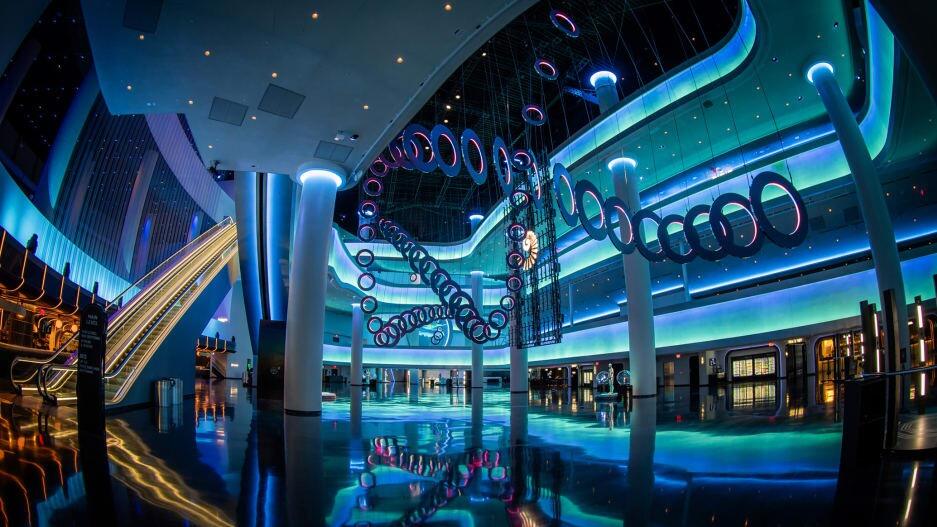
Gallons of digital ink have been spilled to describe the glowing exterior of Las Vegas’s Sphere, the orb-shaped entertainment venue on the Las Vegas Strip that opened on September 29 with a performance by U2. And how could it not? With a 580,000-square-foot surface consisting of 1.2 million LED discs showcasing everything from blinking eyeballs and a mesmerizing AI-art piece by Refik Anadol to hyper-produced ads for upcoming shows, the largest spherical building ever constructed is one of the world’s unique structures. It’s also a perfect fit—and an up-the-ante—for the restless, nonstop, glittering shit show that is Vegas.
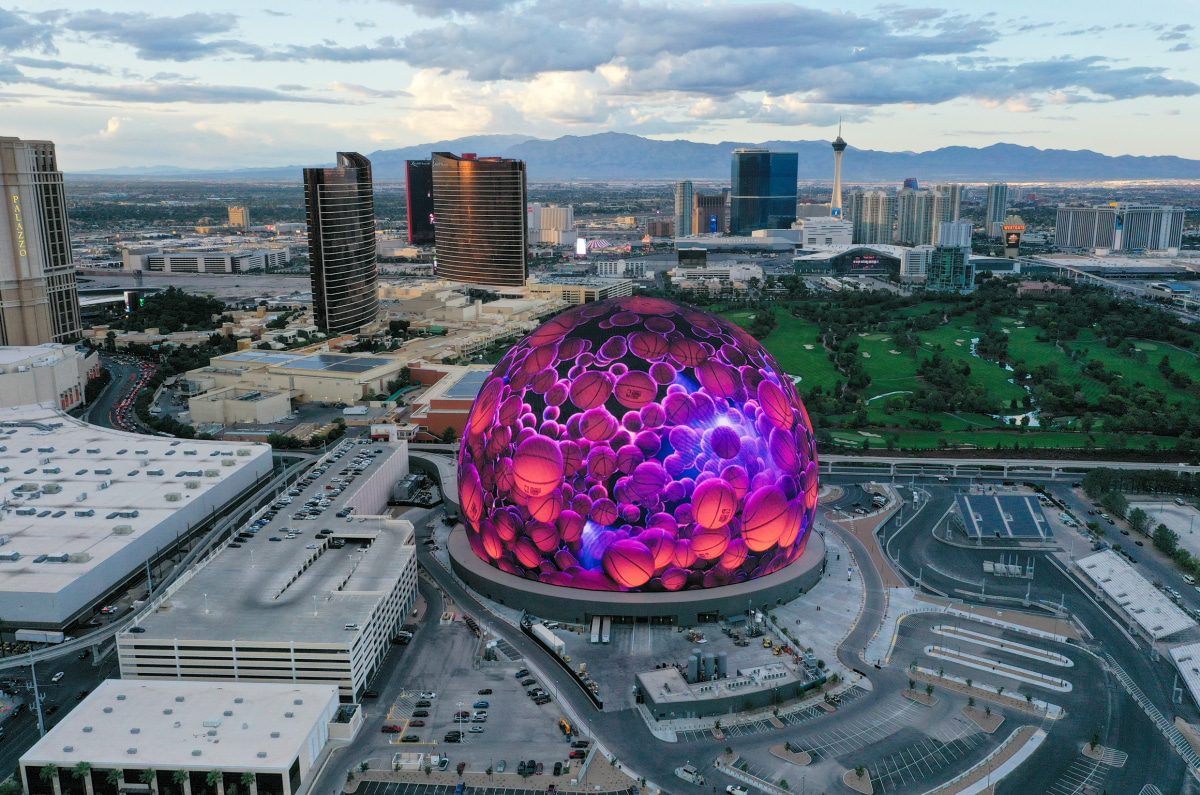
But so far, discussion of the building’s 875,000 square feet of interior spaces has been mostly lacking. Surprise! These areas are every bit as transporting as what’s outside.
Designed by MSG Entertainment and hospitality specialists Icrave, this internal world is carved out—largely, column free—via a complex structure (devised by engineers Severud Associates) that incorporates concrete and steel-ring beams, girders, and trusses supporting a 13,000 ton steel roof, surrounded by a gridded steel exoskeleton. The 18,000-seat theater, curved like a classical amphitheater, is dominated by a wraparound 16K screen that at 160,000 square feet (that’s four acres) is the largest high-definition LED screen in the world. A heap of additional technology serves to make seeing a concert or movie here as visceral as humanly possible. Don’t come here if you don’t like being overstimulated.

That includes a 167,000 speaker array (hidden behind the screen, which if you look closely is, made up of 64,000 separate LED tiles) that can be pinpointed, via a Holoplot system, to varying areas of the theater; and haptic features like seats that can move, rock, and vibrate to accentuate performances along with the introduction of wind, smell, hot or cold, and other sensory experiences. To avoid echoes and other audio distractions, virtually every surface inside the theater bowl is designed to either absorb or diffuse sound aside from a series of reflectors, which help target specific sounds from the show.
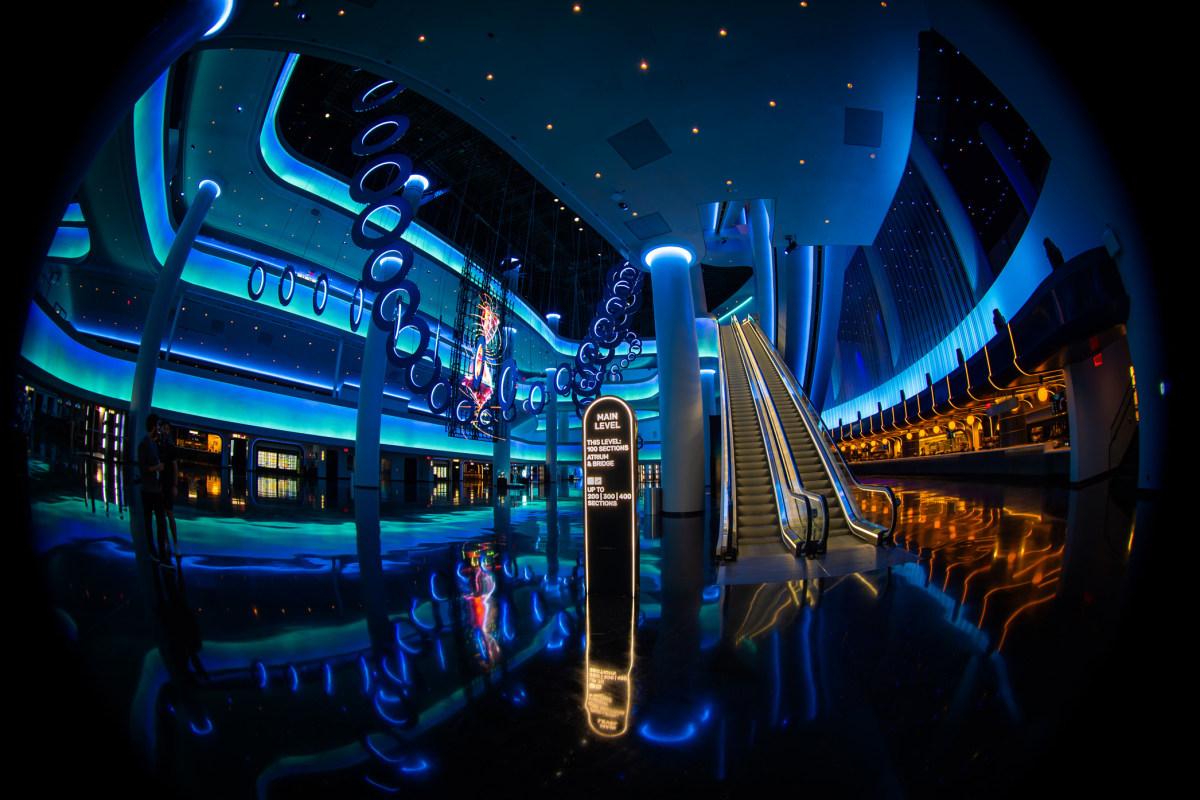
But unlike most performance spaces, where leaving the theater is a bit of a buzzkill, at Sphere, every space is designed to transport you into a similarly surreal world, notes Lionel Ohayon, founder and CEO of Icrave. “The experience doesn’t begin at the theater,” he says. “As soon as you pass the threshold of the Sphere, you are in the show.”
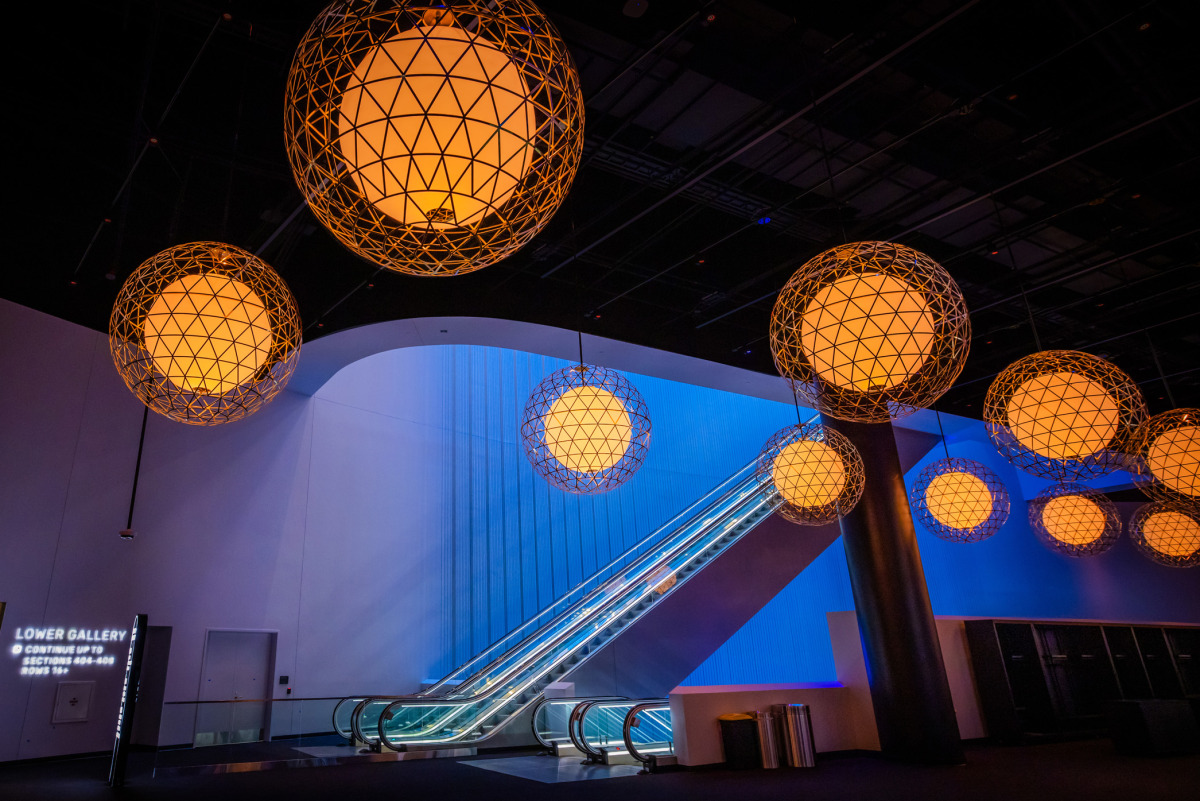
The Sphere is dominated by an eight-level atrium, ringed with rounded mezzanines and bisected by crisscrossed escalators and flying bridges. It’s as immersive and otherworldly as the theater itself. To increase reflectivity—and a sense of otherworldly limitlessness—the floor is made of shiny, highly polished black terrazzo. There are virtually no straight lines anywhere. The lighting system, says Ohayon, “has a personality that can speak to you,” with virtually every surface lit by indirect LED illumination that can be customized for intensity, temperature, or color to match the mood or theme of any show. Entry and exit thresholds consist of low archways that compress you and then dramatically release you into taller spaces.
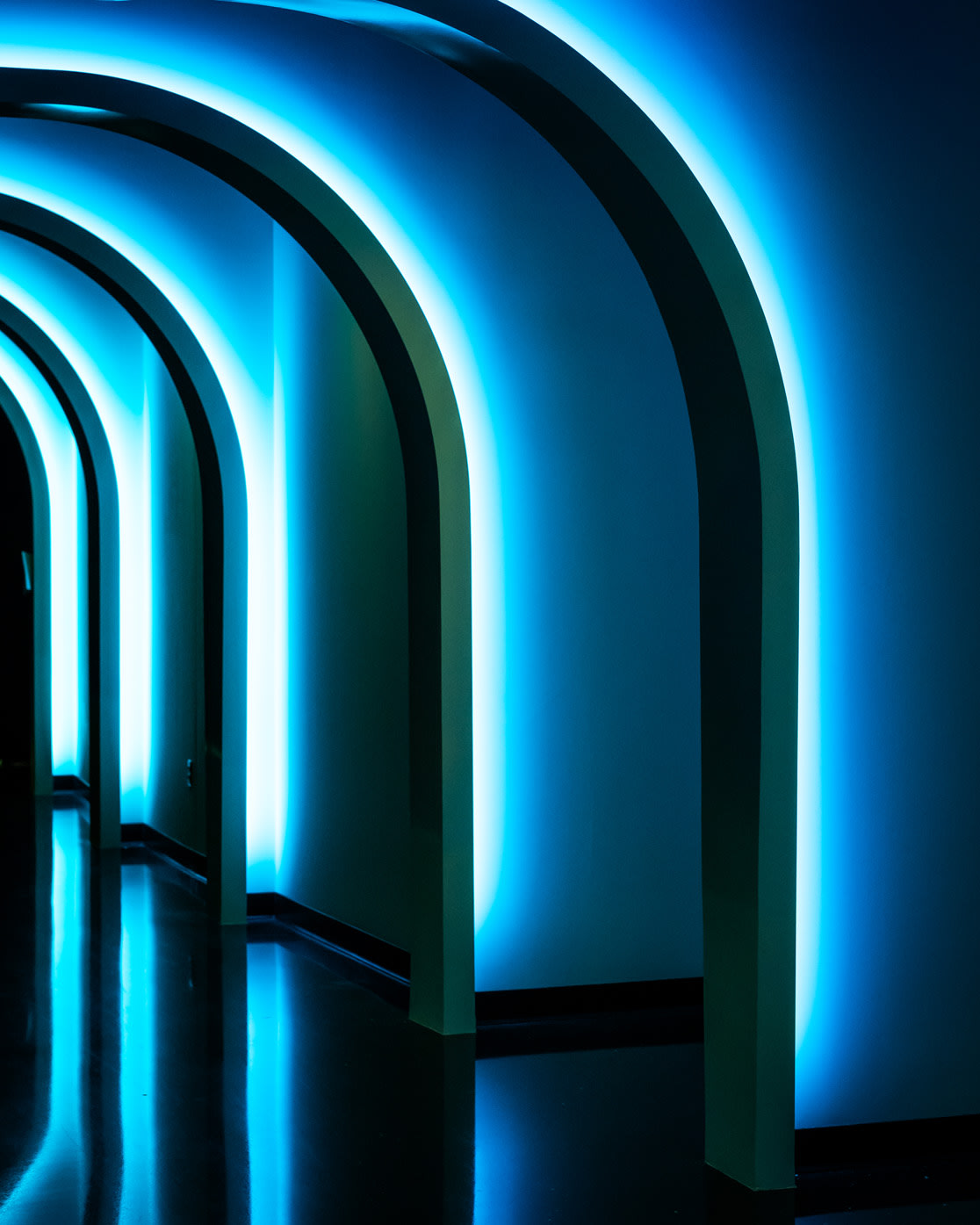
Within these surroundings, the designers have layered elements designed to deepen your experience and draw you through the cavernous setting. Or as Ohayon calls it, “building a narrative that there’s always something more to discover.” Temporary insertions, like colorful, 50-foot-high holographic images and an art installation of interlinked rings hanging from the top of the atrium, help keep the spaces fresh for repeat visitors. Food and beverage offerings have tightly curved entries with rich colors and amber-hued hearths leading you in like cozy oases. And shimmering reflective graphics subtly tell the story of the mathematical algorithms needed to pull off the engineering feats here. Oh and by the way, you’re welcomed to the whole place by Aura, an eerily realistic robot that introduces you to the many technologies inside.
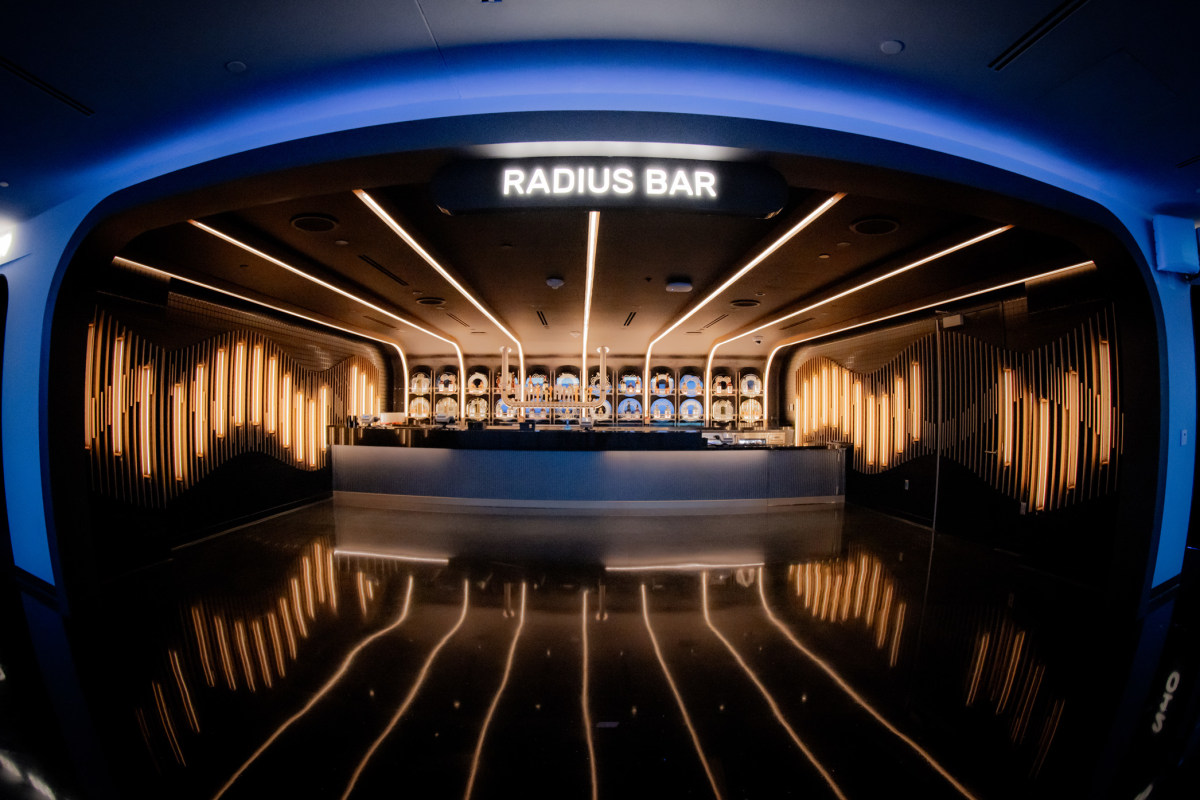
For Ohayon, whose architecture thesis at the University of Waterloo back in 1994 investigated the impact of digital space on the real world, things have come full circle. But despite the abundance of hi-tech everything fueling Sphere, he’s cognizant that flooding people with tech for its own sake could rip them out of their experience and the sense of floating in another world. “As complex as it is, it’s super reductive,” he says. “The promise of technology is that it’s invisible. It’s here to support the experience. That’s the magic.”





































